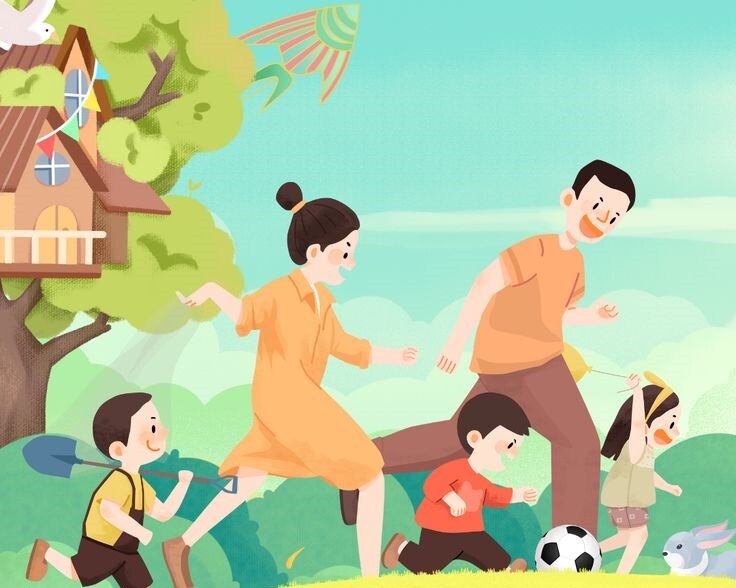Outdoor play offers children a world of fun and exciting experiences, fostering the development of essential skills. Exploring new places allows children to learn about the culture, history, and people of that place, enriching their knowledge.
Taking your child to these three fun locations will not only multiply their joy but also nurture their mind and body, promoting better brain development and faster physical growth.


A Place with Flowers and Trees
Children often have a natural affinity for nature. A grassy field with a few wildflowers and some large trees can be an ideal playground.
For instance, running through a park and touching leaves and smelling flowers can boost their mood.
Even adults find relaxation for their bodies and minds when they see fresh grass or take a walk in the woods.
In fact, soil releases feel-good laughter gas, and trees emit phytoncides that cool the body.
A child’s brain develops rapidly, especially before the age of 12. If they spend most of their time indoors, their brain misses out on natural stimulation, limiting emotional and cognitive development.

Children often show a preference for nature.
So, don’t underestimate the small park down the street. Walking barefoot on the grass, observing ants, and collecting leaves of different shapes are simple yet powerful ways to engage their brains.
When children are in a learning environment, they perceive and think through language. Games that encourage more language interaction can enhance their learning experience.
By visiting places with flowers and trees, children get a chance to discover the beauty of nature. They learn about different plants and develop a love for the natural world.
The colors and fragrances of flowers stimulate their senses, enhancing their perception and creativity.

A Place with Mountains and Rivers
The natural environment is ever-changing, and a child’s brain must constantly adapt to new situations.
For example, navigating a rugged mountain path requires independent thinking and action, stimulating the development of the frontal lobe, which helps them learn to react calmly and control impulses. Improved self-control means they can sit still more easily back in the classroom.
The sights of mountains and the sounds of wind, water, and insects can deeply stimulate neurons, encouraging the brain to form more connections.
Moreover, during this process, children need to constantly adjust their balance and use their hands and feet. These large movements can stimulate the development of the cerebellum and improve coordination.
Adequate physical activity throughout the day helps children burn energy and release emotions. In fact, this whole-body exercise can promote the secretion of growth hormones, and getting enough sleep is key to growing taller.

The natural environment presents ever-changing scenarios, challenging the brain.

A Place with High Contrast
The brain craves new stimulation, especially in environments with “high contrast,” such as transitioning from a quiet library to a bustling market or from an urban building to the countryside.
Research has found that when children experience shifts between different scenes, it increases hippocampus activity and stimulates acetylcholine secretion. The former is responsible for memory, and the latter plays a crucial role in inspiration and creativity. Both help keep the brain excited and active.
In other words, children develop a broader understanding, flexible thinking, and a willingness to embrace new experiences.
If you want your child to boost their intelligence, take them to places with high contrast and diverse experiences.

The brain thrives on new stimulation, especially in high-contrast environments.
For example, take your child to the countryside for a few days, where they can see chickens, ducks, cows, touch the soil, and smell the hay. This experience, vastly different from city life, will awaken their senses and rejuvenate their brains.
Take them to a museum and then to a farmers’ market. These two contrasting atmospheres will provide fresh stimulation for their brains.
When dining out, avoid always going to the same familiar places. Instead, choose a new restaurant and try different cuisines.
Nature is the most valuable free classroom. True development lies in simple happiness. Let your child play freely during vacations. This will enhance their intelligence, foster wisdom, and contribute to their overall healthy growth.
The Harvard Expert’s Guide: 6 Brain-Boosting Foods for Academic Excellence
A groundbreaking study from Harvard University has unveiled six ‘superfoods’ that are capable of boosting brain power and enhancing academic performance in children. These extraordinary foods have been shown to provide the brain with an energy surge, leading to improved cognitive function and higher test scores.






































